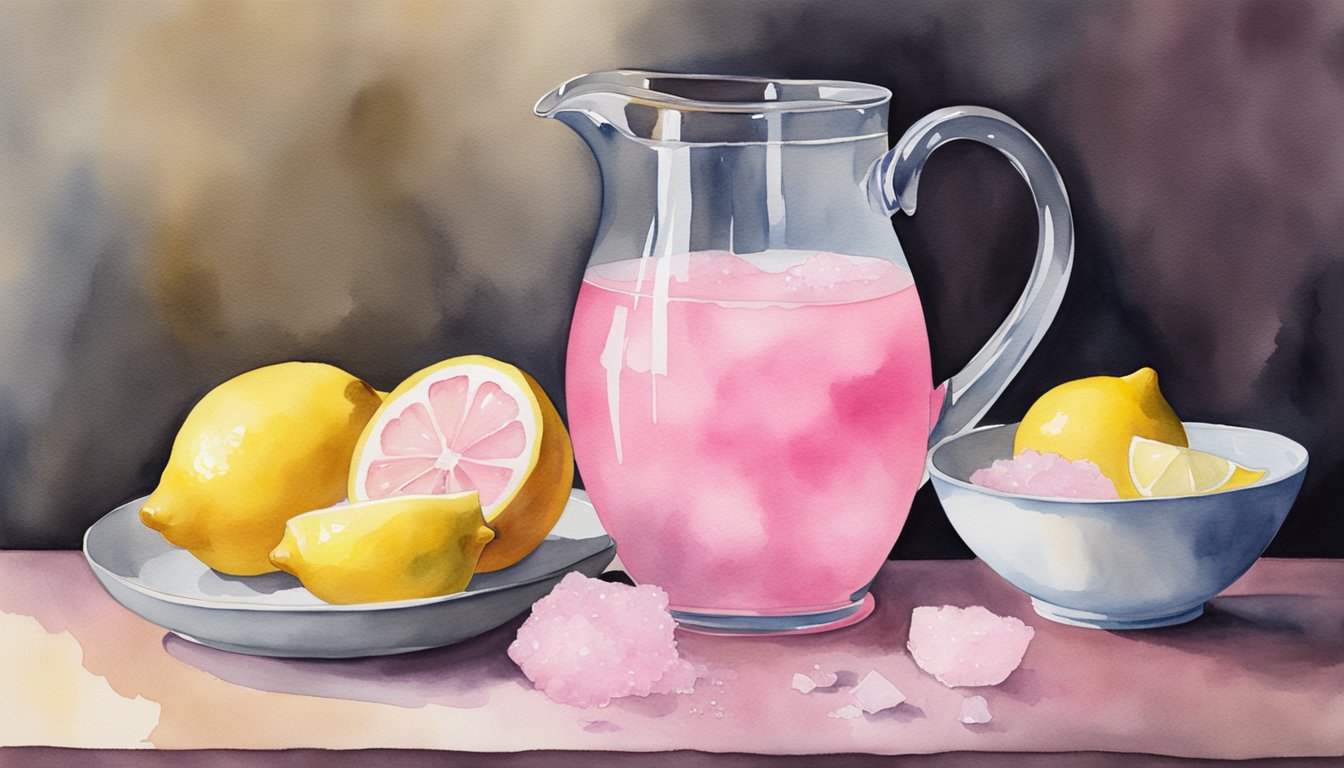Origins and History
The story of pink lemonade begins with a colorful mix of fact and folklore. One popular tale attributes the drink’s creation to a resourceful vendor named Pete Conklin. During a circus event in the 1850s, it is said that Conklin ran out of water to make regular lemonade. Thinking on his feet, he used a tub of water in which a performer had washed her pink-colored tights, resulting in a strawberry-hued concoction that was an instant hit with the spectators.
Another narrative credits Henry E. Allott, a circus promoter and concessionaire, with inventing pink lemonade. Allegedly, he accidentally dropped red cinnamon candies into a batch of lemonade, and rather than waste it, he sold the newly tinted drink as a novelty, much to his audience’s delight.
The origins of pink lemonade also intertwine with the stories of European immigrants, who brought to America their own traditions and entrepreneurial spirits. Many became inventors and innovators, perhaps contributing to the unique twists on lemonade found in the U.S.
The drink has been associated historically with the circus and bareback riders, suggesting a sense of whimsy and excitement that matched their lively performances. With no single inventor or definitive origin story, pink lemonade remains in the company of many beloved culinary mysteries, continuing to refresh and intrigue those eager to sip on a glass of Americana.
For more about the tales involving Pete Conklin and the circus connection, check out this digest on lemon’s global history.
Making Pink Lemonade

Creating the perfect pink lemonade is an art that combines the tartness of regular lemonade with sweet bursts of color and flavor. This refreshing beverage is not only a visual treat but a delightful twist to the classic lemonade.
Ingredients and Substitutions
To whip up a classic pink lemonade, the main ingredients remain similar to homemade lemonade: fresh squeezed lemon juice, sugar, and water. In place of water, one can use simple syrup to ensure the sugar dissolves completely for a smoother texture. The pink hue can be achieved with various fruit juices such as cranberry, pomegranate, or a mix of strawberry and raspberry juices. For those looking to avoid artificial colorings or flavors, pureed fruits or grenadine, a common bar syrup, are ideal natural alternatives.
- Basic Needs: Lemon juice, sugar, water/simple syrup
- Pink Color: Cranberry juice, strawberry/raspberry juice, pomegranate juice, grenadine
- Natural Touch: Fresh strawberries, raspberries, or pomegranate arils offered in alternatives to grenadine
Steps and Techniques
Begin with a pitcher or mason jars as the mixing vessel. First, combine lemon juice and simple syrup—or sugar and water—to create the lemonade base. Stir until the sweetener is fully dissolved. Then, introduce the chosen ingredient to impart the pink color. One technique that enriches both the color and flavor is incorporating frozen fruit juice concentrates, which also helps chill the drink without diluting it. To serve, garnish with a lemon slice or a sprig of mint for a refreshing look.
- Combine: Lemon juice + sugar/water or simple syrup in a pitcher
- Color: Add pink coloring agent and stir well
- Serve: In mason jars, garnished with lemon slice or mint, refrigerate if desired
Variations and Mixology
From a simple pink lemonade to an elaborate cocktail, the variations are endless. Strawberry lemonade or raspberry lemonade adds fruity notes, while lavender lemonade offers an aromatic twist. For an adult beverage, a splash of gin or vodka will transform the drink into a light cocktail. The Arnold Palmer turns into a ‘Pink Palmer’ with the substitution of pink lemonade for regular lemonade. Adding watermelon or mint enhances both the flavor profile and visual appeal, suitable for any occasion.
- Fruity Variants: Strawberry, raspberry, watermelon
- Herbal Sensation: Milder flavor with lavender
- Spirited Options: Spiked with vodka or gin
- Riff on Classics: Pink Arnold Palmer
Given its versatility, pink lemonade is a delightful beverage option whether one seeks a non-alcoholic refresher or a base for mixology experiments. Enjoy the taste of summer in every glass!
For more information on homemade lemonade and variations, readers can explore resources like Making Pink Lemonade that delve into personal lemonade crafting experiences.
Health and Nutrition

Pink lemonade is not just a colorful twist on a classic thirst quencher; it also comes with its own set of nutrition facts. A standard serving of pink lemonade can contain varying amounts of calories and sugar, depending on the recipe or brand. Commercial pink lemonade often includes granulated sugar and sometimes artificial sweeteners, which contribute to the total calorie content.
For those watching their sugar intake, it’s important to read the nutrition labels carefully. Some pink lemonade products may be sweet but also high in added sugars. On the other hand, homemade pink lemonade can be adjusted to personal taste and dietary requirements, possibly substituting granulated sugar with alternative sweeteners.
When it comes to nutrition information, pink lemonade typically provides vitamin C thanks to its lemon juice content, although it’s not usually a significant source of other nutrients. However, certain brands may fortify their beverages with additional vitamins and minerals.
Remember, a balanced diet is key, and while pink lemonade can be a delightful treat, moderation is essential due to its sugar content. Interested in finding out how different beverages stack up in nutrition information? Take a look at the research on the phosphorus content of popular beverages.
For those seeking a healthier version, there are recipes available that utilize natural sweeteners or less sugar. The perks of pink lemonade lie in its hydrating nature and the joy of sipping a cool, tangy drink on a warm day.

